Dawn in Wongabel forest. It’s June, and there’s a hint of winter chill as I trudge up and down the forestry tracks. I’ve traveled here, to the Atherton Tablelands, in search of some of Australia’s most bizzare and fabulous mammals: rotund, green-furred possums, others that are striped like skunks, and a tiny macropod that looks like a rat. But the species I most want to see — a tree-kangaroo — is hiding somewhere in this forest.
I spent most of last night walking in circles on the trails, scanning the canopy with my headlamp and seeing little except the occasional brush-tailed possum. Around midnight, something big crashed through the foliage overhead, and then bounded off into the undergrowth. That near-miss gave me hope. But then again, the species I seek is mostly nocturnal. So I’m still caught off guard when I round a bend and see a massive, hunched shape in the canopy.
A long, pendulous tail dangles below a stocky, kangaroo-like body with a short mussel and rounded ears. That silhouette is unmistakable: it’s an adult Lumholtz’s tree-kangaroo, sunning itself on an exposed branch. It watches me for a moment, before returning to grooming off the morning’s dew with its large, clawed paws.
Tree-kangaroos are one of the world’s most bizarre and fascinating mammals. Filling an evolutionary niche akin to monkeys, they’re keystone species in the rainforests of New Guinea and Australia. But these incredible mammals are also under threat.
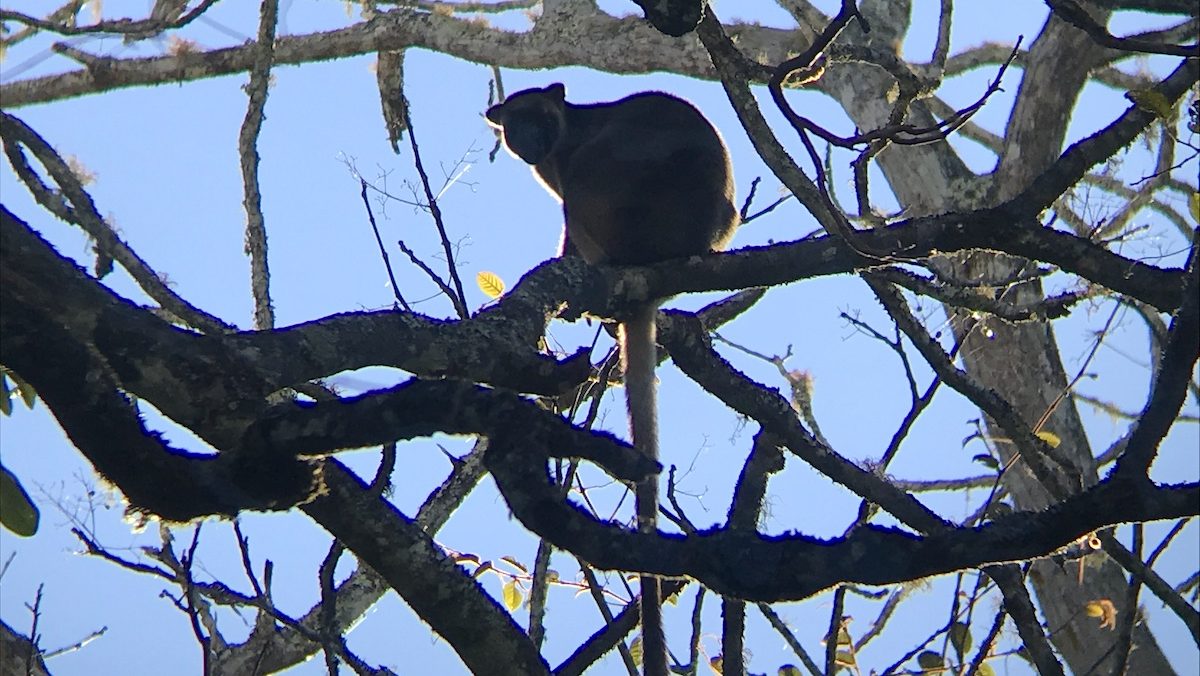
Meet the Tree-kangaroo
There are 10 species of tree-kangaroo, all in the Dendrolagus genus. Two species live in the tropical forests of north-eastern Australia, while the rest are scattered across the mountains of New Guinea. All share a relatively similar body plan, lifestyle, and diet. Tree-kangaroos are semi-arboreal, living much of their lives in the forest canopy, where they can hop along tree branches like their kangaroo brethren. But they’re also quite comfortable on the ground, too.
Most species are territorial, with males defending a territory that overlaps with the home range over several females. They tend to be solitary creatures, except when mating or when females are raising young. Most species are herbivores, with the occasional reports of some species consuming eggs and other meat in captivity.
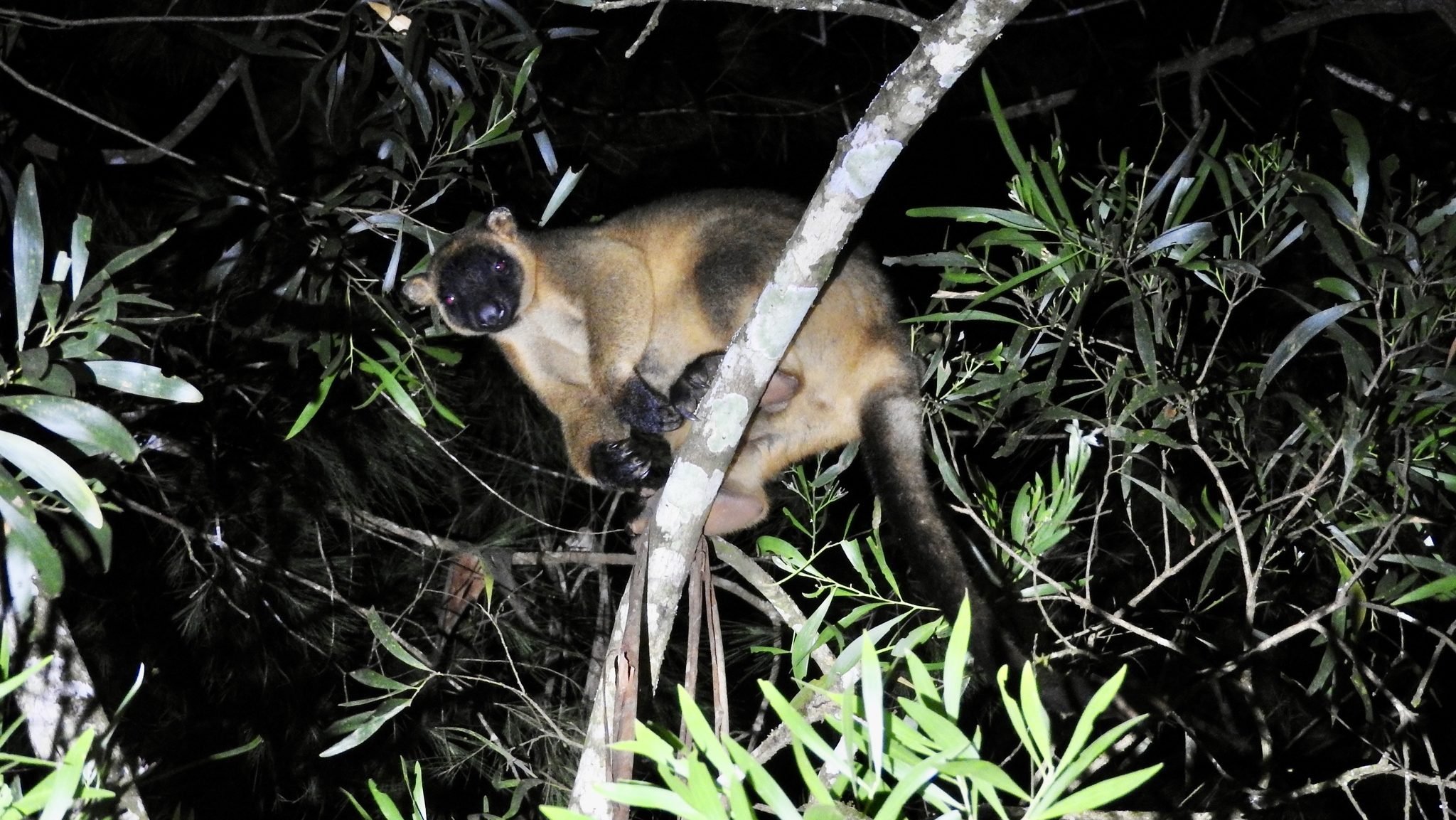
From Tree to Ground, and Back Again
So how exactly did a kangaroo end up living in trees? The tree-kangaroo’s evolutionary odyssey is a testament to how species can adapt to ever-changing circumstances.
Physical and genomic evidence suggests that all of Australia and New Guinea’s macropods — including kangaroos, wallabies, padelemon, etc — evolved from an arboreal, possum-like ancestor around 30 million years ago. Much like our own evolutionary story, this species descended from the tree-tops and evolved to live on the ground.
Over the eons, that possum-like ancestor evolved into a diverse array of macropods, from the massive red kangaroo of the arid zone to the small, forest dwelling pademelon, to the agile, escarpment-dwelling rock wallabies. And at some point along the way — the fossil record is a bit patchy — they evolved the distinctive bi-pedal, hopping gait that sets them apart from so many other mammals today.
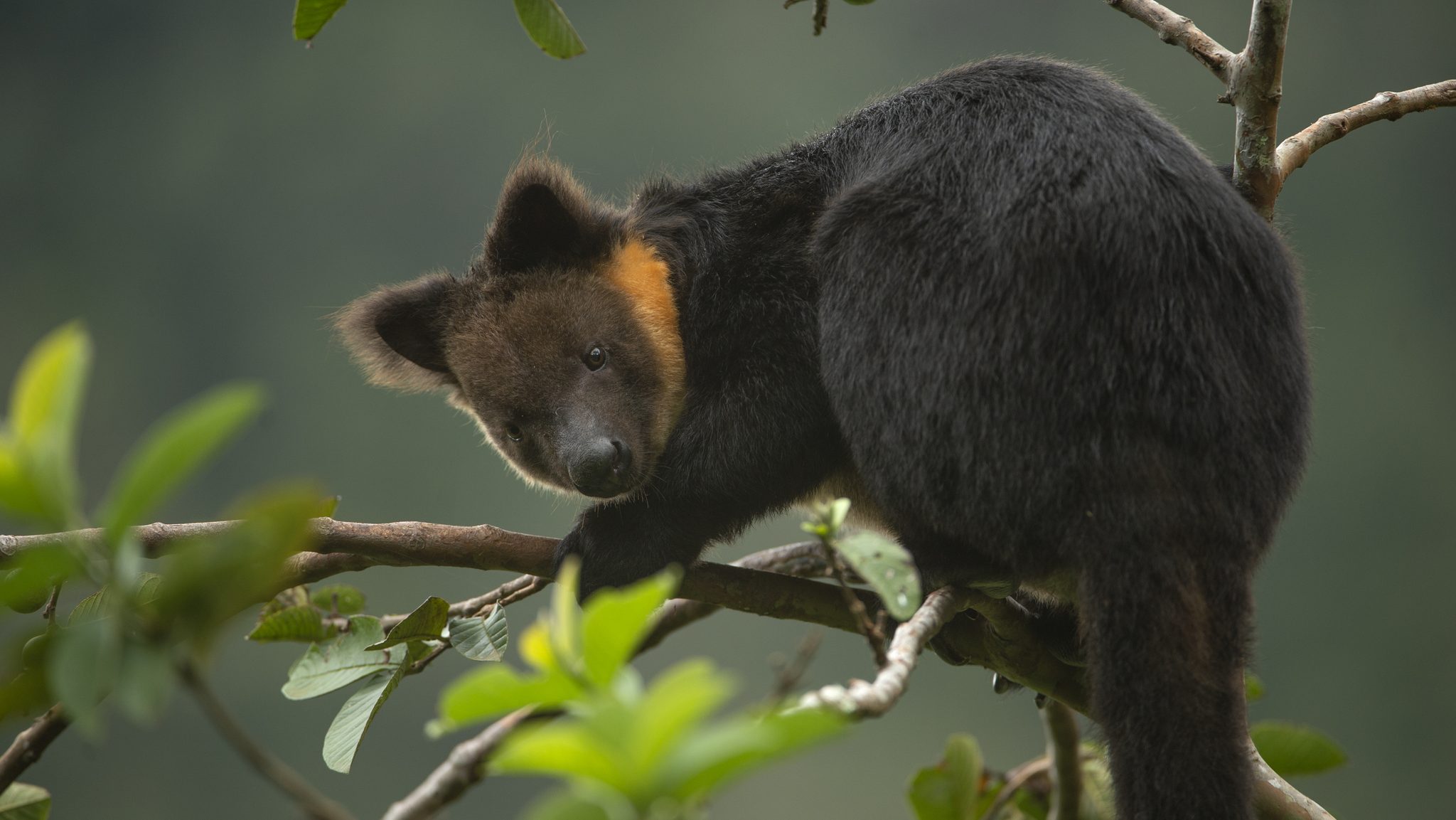
Now, to the tree-kangaroos. Between 5 and 3.5 million years ago, Australia experienced a brief pause in an eons-long drying trend. For a few million years, forest habitats expanded across the continent. During this time, evolutionary biologists believe that an ancestral species of rock wallaby gradually adapted from climbing rocky cliff faces to climbing trees. They evolved shorter, broad feet with flexible ankles, and strong forearms with curved claws; all adaptations that aid life in the trees.
Paleontologists regularly find ancient tree-kangaroo fossils in locations as diverse as the Nullarbor plain, in the far south, to the New Guinea highlands. Some of these species were as large as adult humans.

Tree-roos Down Under: Lumholtz’s & Bennett’s
Today, the most commonly encountered tree-kangaroos live in the wet tropics of Far North Queensland. The Lumholtz’s tree-kangaroo (D. lumholtzi) is the more southerly species, found between Cardwell and the Daintree River. Like all tree-kangaroos, they’re notoriously difficult to see, because they spent most of the day sitting motionless in the canopy. They forage at night, and when disturbed can jump to the ground from heights of up to 5 meters. (Which explains the crashing sounds I heard while searching for them.) Much of the old-growth forest in the Atherton Tablelands has been cleared for agriculture, but the Lumholtz’s tree-kangaroo has adapted reasonably well to survive in secondary forests.
The second Australian species, the Bennett’s tree-kangaroo (D. bennettianus) is found farther north, roughly between the Daintree River and Cooktown. This species exhibits extreme sexual dimorphism, with males growing up to 50% larger than females. The two species can be differentiated by their coloration: Lumholtz’s have a distinctive black facial mask with a buffy forehead, whereas Bennett’s has a rusty nape.
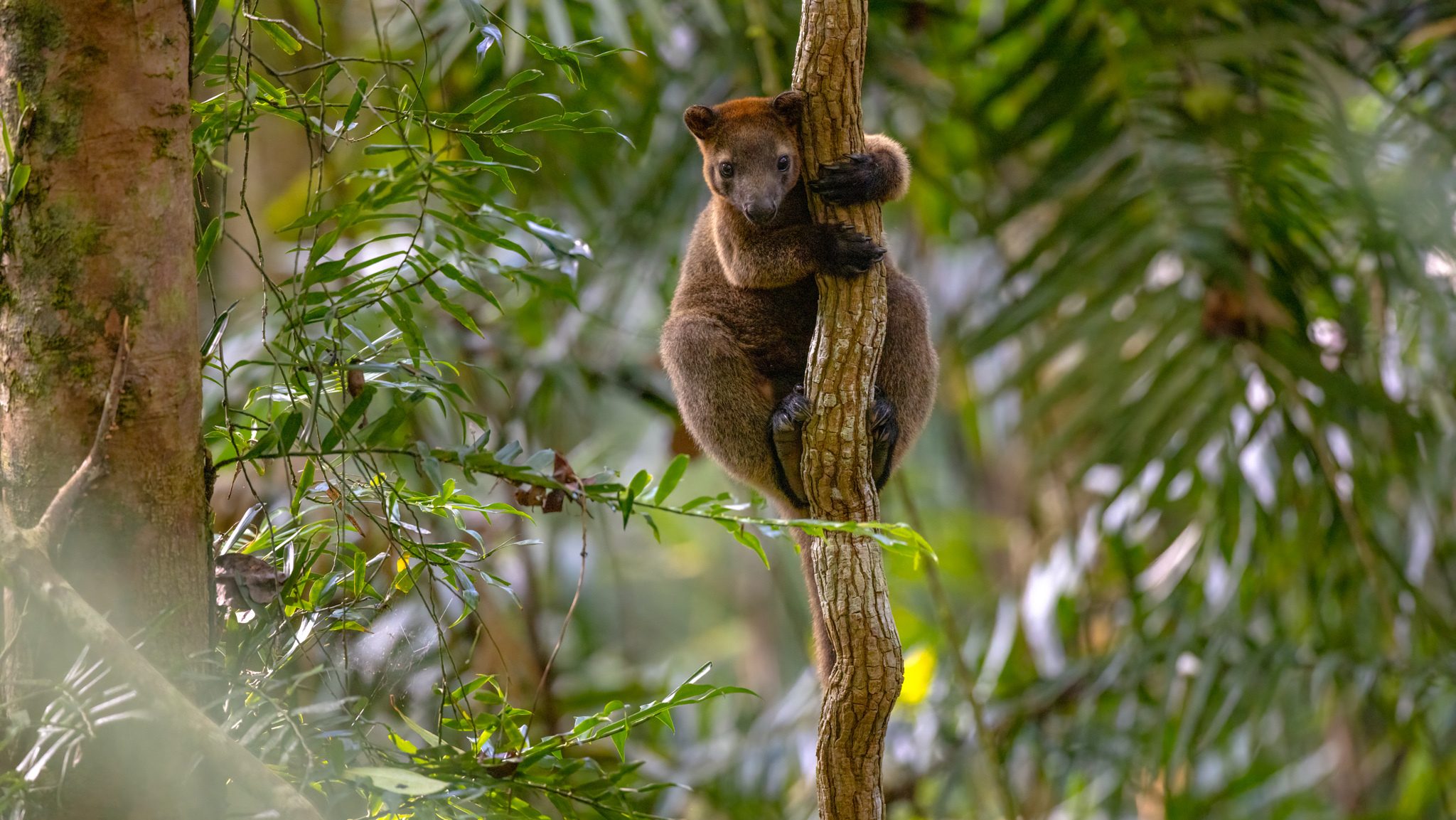
Ghosts of the New Guinean Forests
The remaining eight species of tree-kangaroo are found across the island of New Guinea. Ecologists know very little about most of them, as they’re found in mountainous, difficult-to-access terrain. Many are isolated to specific mountain ranges, leading to a lot of back-and-forth between taxonomists over which populations represent distinct species and which are subspecies. (The current tally sits around 17 recognised or proposed subspecies.)
Doria’s tree-kangaroo (D. dorianus) lives on the island’s far south-eastern peninsula. They have a uniform dull brown coat and are one of the largest tree-kangaroo species. A closely related species, the wondiwoi tree-kangaroo (D. mayri) made global headlines in 2018, when it was re-discovered by a British naturalist. Found only on a small, mountainous peninsula in far West Papua, the species was known from only a single specimen collected in 1928. Scientists assume it was extinct until the 2018 rediscovery, and it remains one of the most mysterious and least-known mammals on earth.
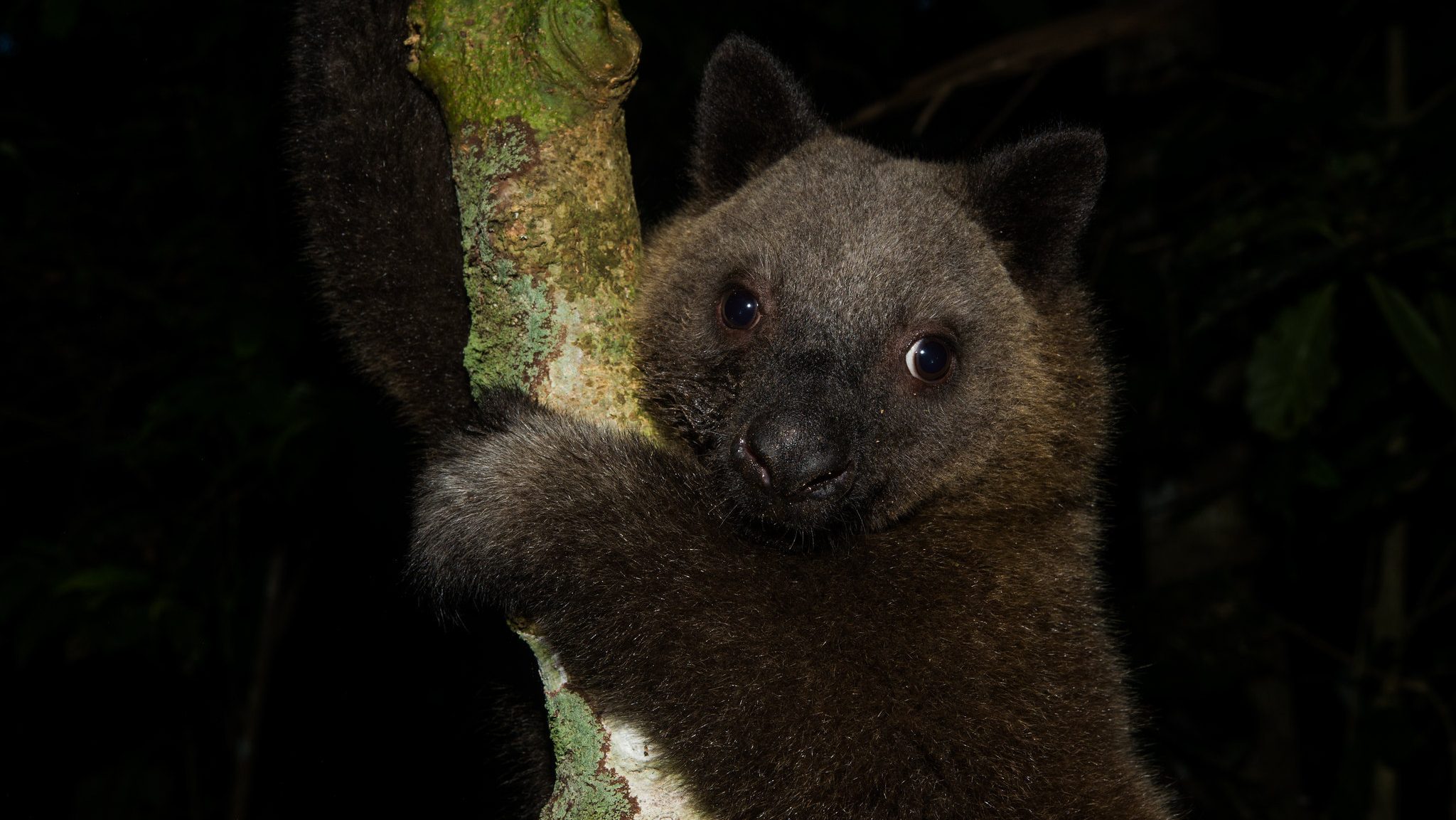
Another rare species in the Doria’s group is the tenkile (D. scottae), which lives at high elevations in the Torricelli Mountain Range, along New Guinea’s northern coast. The tenkile has dark, dull black coloration and a distinctive smell, a trait shared by a few other tree-kangaroo species. Field guides describe the odor as “powerful and persistent” and “a combination of musk, human male scent, and pine needles.” The tenkile is critically endangered. Their population dropped as low as 100 animals in the 1900s, but dedicated conservation efforts have seen that increase to roughly 300 tenkile in recent years.
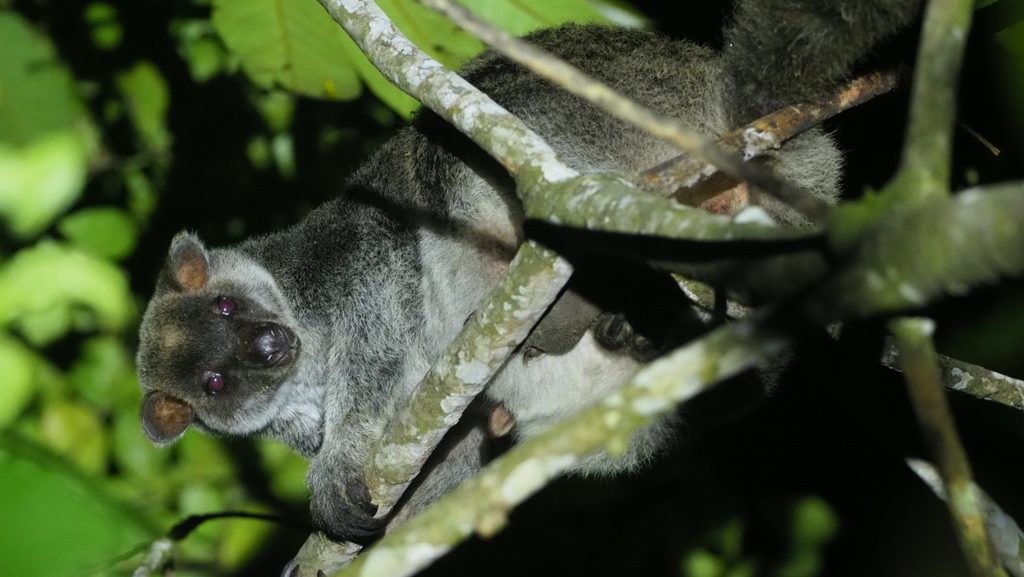
Another cluster of closely related tree-kangaroo species is known as the Goodfellow’s group. The nominal species the Goodfellow’s tree-kangaroo (D. goodfellowi) has striking coloration, with a warm chocolate brown coat, and a contrasting golden yellow head and rump stripes. Locals report seeing male-females pairs and small family groups, leading ecologists to believe that this species is more social than other tree-kangaroos. The similarly striking Huon tree-kangaroo (D. matschiei) might be familiar to some readers, as several dozen are found in zoos across North America.
The grizzled tree-kangaroo (D. inustus) is found on West Papua’s Bird’s Head peninsula and the foothills of the Foja Mountains. It looks quite similar to Australia’s Lumholtz’s tree-kangaroo, with a black facial mask and grey brown fur.

Perhaps the most striking of all tree-kangaroo species is the dingiso (D. mbaiso). They have a black coat, with a snow-white belly and white ring around their nose. The species was first discovered in the early 1990s, and filmed for the first time in 2009. Its scientific name means “the forbidden animal” in the Moni language, and local communities believe that the dingiso is the spirit of their ancestors.
Dingiso are unusual for two reasons: they spend far less time in trees than other tree-kangaroos, and they live at incredibly high elevations. The species is only found in Western New Guinea’s Sudirman Range, where they live just below the tree line at elevations between 10,700 and 13,800 feet (3,250-4,200 metres). For context, that’s a similar elevation to classic alpine species, like bighorn sheep, chamois, and snow leopards.
A Future At Risk
In Australia, tree-kangaroos are threatened by habitat loss and other dangers that come from living near human development, including dog attacks and vehicle strikes. Both species are considered near-threatened by the IUCN, although the Lumholtz’s tree-kangaroo currently has a stable population.
New Guinean species face a far more uncertain future. All rank on the IUCN’s Red List of threatened species, ranging from Vulnerable to Critically Endangered.
Most species are threatened by forest loss and degradation. Commercial logging is widespread in both Papua New Guinea and the Indonesia province of West Papua. Additionally, most of the island’s people rely on subsistence agriculture. Significant population growth in recent decades has resulted in more and more forest being lost to small-scale gardens. These same communities also rely on hunting to supply most of their protein, and tree-kangaroo are still killed for both their meat and fur.
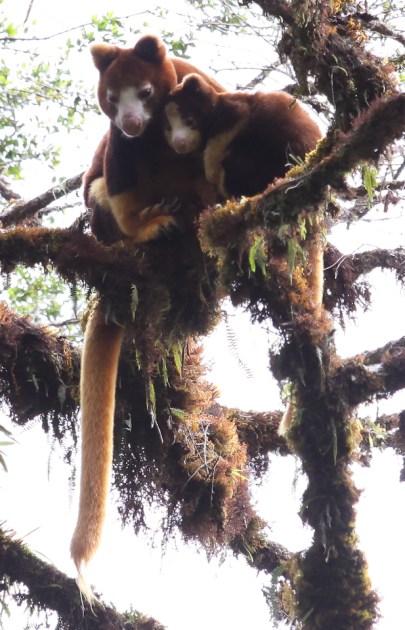
Tree-kangaroos are also hamstrung by a slow reproductive rate, which means their populations can’t bounce back easily. For example, the joeys of Bennett’s and Lumholtz’s tree-kangaroos develop in their mother’s pouch for between 8 and 9 months, and then stay close by for up to two more years. Less is known about the reproduction of New Guinean species, but ecologists expect a similarly long period of parental care.
In New Guinea, successful tree-kangaroo conservation depends on partnering with local communities. In the Torricelli Mountains, the Tenkile Conservation Alliance works with ~13,000 local people from 50 villages to protect three species of tree-kangaroo: tenkile, weimang, and grizzled.
Local communities implemented a hunting moratorium on tree-kangaroos, which is learning to an increase in their populations. In return, the TCA helps to improve medical care, sanitation, education, and food security in these communities, along with alternate sources of income.
These types of conservation projects aren’t easy: they require significant, long-term investment and genuine partnerships with local people. But they’re the best model to help tree-kangaroos survive in the long-term.
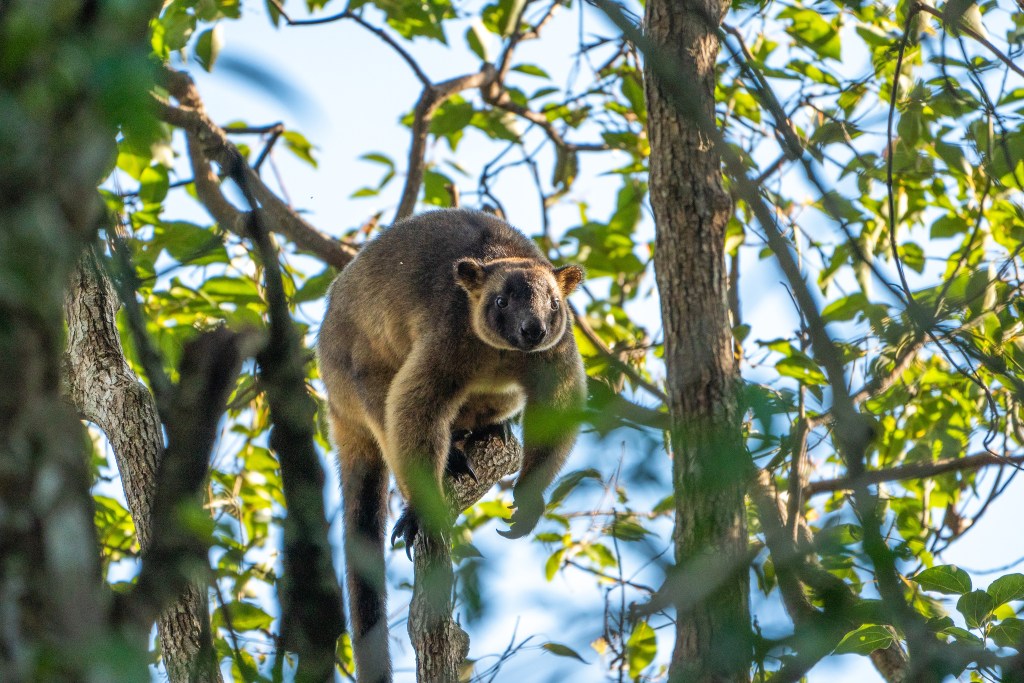



Join the Discussion